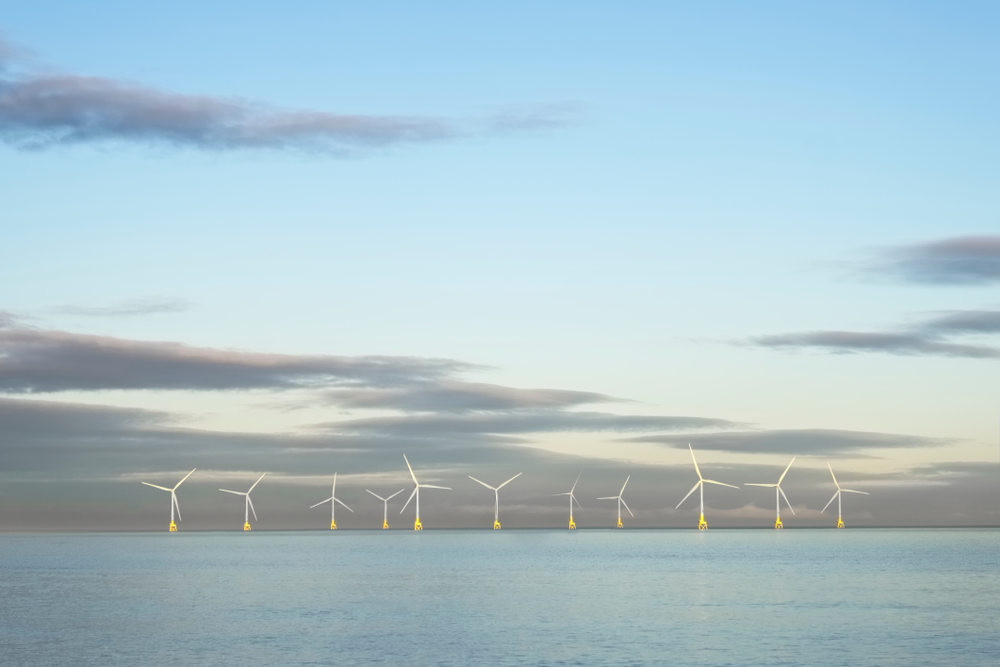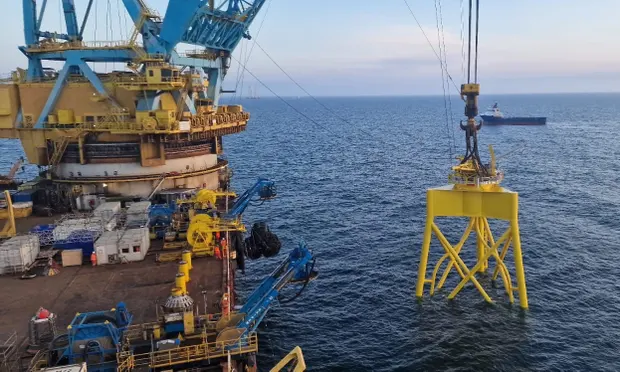The remote and windy town of Roscoe, just over 200 miles west of Dallas, Texas, is in many ways an unassuming place. It’s home to about 1,000 residents, as well as a post office, a cemetery and an annual “mud bog” competition for racing truck drivers.
But in October 2009, construction was completed on the Roscoe Wind Farm, which at the time was the largest wind farm in the world. Some 627 wind turbines, about 400 feet tall, are spread across the 100,000-acre arid West Texas expanse, which is otherwise used by dryland cotton farmers who still cultivate the land.
“It’s had a great impact on the area,” says Edwin Duncan, a 77-year-old resident whose family farm had turbines installed on it as part of the project. “[It’s brought in] money for the schools and employment for workers, and for the general economy.”
Roscoe Wind Farm is a prime example of how the wind energy revolution is quietly, or perhaps not so quietly, going about its business, blowing away renewable energy goals. Although renewables like solar and biofuels may receive more attention, wind power is at the center of the transition to a more sustainable energy system. Every year wind energy production records are being broken as the price is plummeting.
“Wind energy production has been one of the world’s great energy success stories,” says Mike Hemsley, deputy director at the Energy Transitions Commission (ETC), an independent energy think tank. “And we expect it to continue.”
According to the International Energy Agency, an independent intergovernmental organization, the amount of electricity generated by wind increased by 273 terawatt hours (TWh) in 2021, nearly a fifth higher than 2020, making it the fastest-growing of all power generation technologies. Wind is now the leading non-hydro renewable, generating a total 1,870 TWh in 2021 — almost as much as all the others combined.
“To reach net zero, wind energy will be absolutely crucial,” says Heymi Bahar, senior analyst for renewable energy markets and policy at the IEA. “It already accounts for a significant amount of global energy generation, but the potential to expand is huge.”
But in order to reach Net Zero Emissions by 2050, Bahar says each year the world will need to add an extra 250 GW of wind production capacity – which is more than double the current level of growth. But, he adds, less than 5 percent of the potential wind capacity around the world is currently being harnessed, given developments in technology that mean turbines can operate effectively at lower wind speeds.
“Most wind energy production is in just four countries,” he explains. “There’s so much room for growth, particularly in Africa, Latin America and Southeast Asia.”
Lessons can perhaps be learned from Texas, the state that produces by far the most wind energy in what is the world’s second largest producer of wind energy. Uniquely, any electricity producer can plug into the state’s liberalized electricity grid, which is separate from the rest of the country. Texas also boosted the market through the creation of Renewable Energy Zones, cutting red tape required for wind farms.
“These zones really allow for quicker scaling up,” says Hemsley.
The Roscoe Wind Farm project, which cost more than $1 billion to build, involved negotiations with 300 landowners and, while it was constructed by German energy company E.ON Climate and Renewables, contains a mix of turbines made by several companies including Mitsubishi, General Electric, and Siemens. Now the farm has an output of 781.5 megawatts, emitting 1.4 million tons of CO2 less than fossil fuels would per year — the equivalent emissions of 250,000 cars. Landowners are paid a percentage of the profits from each turbine on their property.
Matthew Lackner, director of the University of Massachusetts’s Wind Energy Center, also points to the role of a progressive policy known as the Public Utility Regulatory Policy Act in the late 1970s that helped to catalyze the industry’s early growth in the US. “Tax credits really stimulated the wind energy market, but they were then cut by Reagan, and that’s when Europe took over the lead,” he says.
Despite those setbacks, massive investment across China and Europe has propelled huge advances in wind tech. Control systems, generators, gearboxes and blades have improved and become more reliable. “Twenty years ago, we were using 1.5 megawatt, 40-meter blades, now they are 3 to 5 megawatts and 70 meters long,” he adds.
But the wind is now back in the sails of the USA’s turbines following the introduction of the Inflation Reduction Act, a law passed by the federal government last year that will provide some $369 billion in funding for renewable energy through tax credits and new spending. Experts estimate the policy, considered the nation’s most significant effort to combat the climate crisis, could cut emissions by 31 to 44 percent by 2030.
“It’s the most important piece of clean energy legislation published by the US in many years by far,” says Bahar. “It’s a game changer.”
Lackner adds that the Inflation Reduction Act is also providing a degree of market certainty not seen before. “Before, there was a ‘boom-bust’ pattern, because Congress had to approve the tax credits every one or two years,” he says. “Not anymore.”
But there are a number of barriers blocking wind energy from reaching new heights.
Critics say that permit requirements are currently too bureaucratic and long-winded. Research published by the ETC in January estimated that those timelines can be cut by more than half using “simple measures to streamline planning and permitting.”
Denmark, for example, previously required permit requests to be submitted to eight different bodies — now only one is needed. In Spain, smaller-scale wind projects in low-risk areas no longer need to fulfill the country’s lengthy environmental impact assessments, saving approximately two years. In March, the European Commission added to momentum by calling for member states to create “dedicated acceleration areas for renewables” like the renewable energy zones pioneered by Texas.
Infrastructure is another challenge. Wind farms are often far from where the demand is, and networks to transport electricity such as undersea cables, or even simply to connect large projects up to grids, can face a number of logistical issues.
Securing buy-in of local communities will be important, too, according to Hemsley, as the sight of wind farms across the countryside becomes ever-more common. In Scotland, the issue has been addressed by shared ownership of wind farms, bringing significant investment into the communities. In Germany, since 2021 wind turbine operators have paid local municipalities up to €25,000 per wind turbine per year.

Looking ahead, the major progress in wind power will need to take place offshore.
Unlike solar — whose price has fallen due to mass production largely driven by China, creating ever-smaller and more efficient modular designs — wind is blowing in the opposite direction and growing. That means that while solar panels will likely cover billions of homes and buildings in a few decades, wind turbines are most effective high up, away from trees and buildings, or indeed out at sea, and at large-scale.
“It wouldn’t make sense for me to have a small wind turbine on my roof at all,” says Lackner. “I think in the future wind power production will be like a power plant.”
In Scotland, where the North Sea waters are relatively shallow, fixed-bottom offshore wind farms are already operating at a large scale. But in other parts of the world where the depths are much deeper, the next frontier is floating.
Crushed by negative news?
Sign up for the Reasons to be Cheerful newsletter.In April, President Joe Biden’s administration identified an area of nearly 10 million acres in the Gulf of Maine for potential offshore wind development, which would help meet the goal to power 5 million homes with floating offshore wind by 2035.
The turbines could be as high as 850 feet tall with blades as long as a football field.
“The capital cost could be in the billions of dollars for floating farms,” says Lackner. “Because you’re paying not only for the turbine, but also the whole structure of mooring and cables. So, to be competitive, they have to build as large as they can.”









